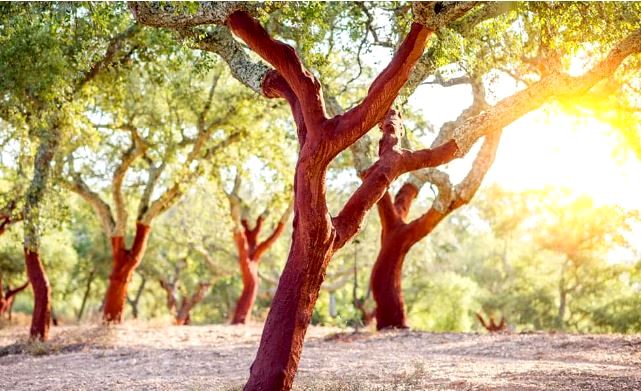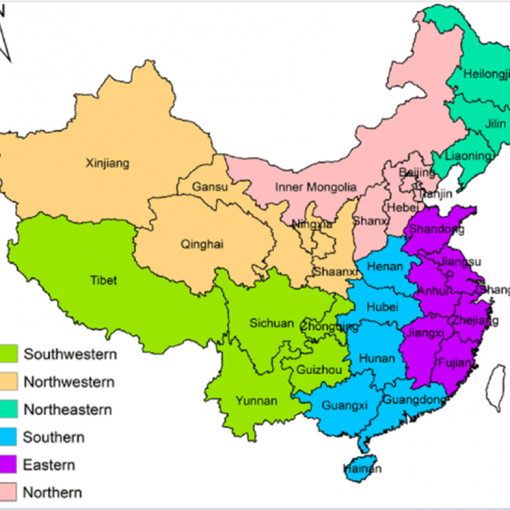22nd March
More about Deep-Sea Mining, Cork Insulation, Easter holiday events and a not-so-sweet note about your chocolate eggs ..

With Easter so early this year, it is hard to believe that the Big Weekend is almost upon us already. And, as we gear up to a new season, there is a lot, lot, lot going on! A bit later I will share some of our new activities for the summer, but first let’s flow on with the watery theme from last time, with another story about our ocean depths.

You will see an image above, bottom right in the picture, about an ocean treasure trove. This was one of a number of reports by or including the BBC’s top climate correspondent, Justin Rowlatt. It has been in the back of my mind that Justin has been rather quiet recently. Perhaps he had a little vacation, but then this past 7 days he has bounced back with a vengeance. https://www.bbc.co.uk/news/science-environment-68576735
The ocean treasure trove refers to some visually rather plain, un-exciting rocks that scientists are getting fired up about. Within the grey-black potato-shaped lumps, or nodules, are Critical Minerals that by now most of us as students of a green future are getting to be quite familiar with e.g. copper, cobalt, nickel and a less familiar one, manganese.
The hoo hah about mining these rocks is not new; environmentalists have been objecting for some time. But moving to get Greenpeace barred from the UN International Seabed Authority, for having an inspecting/ monitoring role, seems a pretty extreme reaction. I ask myself, ‘what has this research expedition got going on that requires such secrecy?’
Rowlatt reports ‘Miners and environmentalists are locked in a battle at the bottom of our deepest oceans’, whilst on the high seas miles above further drama is heating up the fight.
One mining company claims Greenpeace activists disrupted a research expedition when they boarded its vessel in the remote Pacific. As a result, the campaign group could be thrown out of the UN body overseeing controversial plans to begin deep-sea mining. Apparently, in coming days, member states of the UN’s International Seabed Authority could choose to strip Greenpeace of its approved observer status.


DEEP OCEAN MINING LOCATIONS
I took a quick look into who is doing deep-ocean mine research and where. The Greenpeace location is called the ‘Clarion-Clipperton Zone’ after 2 sets of islands (Clarion and Clipperton) in the deep Pacific, both of them having fractures in the ocean floor close by. The fractures themselves are unusually high, mountainous, topographical features. The CCZ extends around 4,500 miles (7,240 km) East to West and spans approximately 4,500,000 square kilometres (1,700,000 sq mi).
What I discovered next was a real surprise. Norway, which I think of as a progressive, ecologically responsible country, has recently approved commercial deep-sea mining in some of its waters. In their case apparently even more metals will be available, such as lithium and scandium. The latter, as its name suggests, is only found in Scandinavia and is a light-weight metal similar to aluminium. When combined in an alloy with aluminium, it is expected to be of value in the manufacture of fuel cells. It is showing promise also, as a treatment of malignant tumours.
Norway’s proposal will open up 280,000 sq km (108,000 sq miles) of its national waters for mining company applications – an area bigger than the size of the UK. Although these minerals are available on land, they are concentrated in a few countries, increasing the risk to supply. For example, the Democratic Republic of Congo, which holds some of the largest reserves of cobalt, faces conflict in parts of the country, not to mention the human rights issues involved there.
Walter Sognnes, co-founder of Norwegian mining company Loke Minerals, which plans to apply for a licence, recognised that more needs to be done to understand the deep ocean before mining begins. “We will have a relatively long period of exploration and mapping activity to close the knowledge gap on the environmental impact.” TOO RIGHT ..
ANTI – The Environmental Justice Foundation comments
16,000 tonnes of cobalt per year, about 10% of annual production, could be recovered through improved collection and recycling of mobile phones.
Martin Webeler, oceans campaigner and researcher, says “it is (? surely that should say ‘might be’, how can he know?) catastrophic for the ocean habitat. The Norwegian government always highlighted that they want to implement the highest environmental standards; this is hypocritical whilst they are throwing away all the scientific advice.” He concluded that mining companies should focus on preventing environmental damage in current operations, rather than opening up a whole new industry.
I would be interested to know which side of the fence you are coming down on, at the moment, with such potentially dangerous experiments?
CORK
It was back in December last year that I first mentioned the idea of a cork render, as insulation and aesthetic enhancement for our library building here. In anticipation of some drier days around the corner this spring, today I welcomed two of the experts from Thermoprotect (Jason and Morten) and found out a lot more about the possibilities.
Cork will not be the cheapest option I could go for. There are other more synthetic choices, even names you are familiar with, like Bostik as a spray or paint-on surface. I was very impressed by how Bostik had been used to transform some old Nissan hut tunnels at a well-known dairy farm, with extra white foam insulation inside as well. They look good. But here I don’t feel it is acceptable to entertain the idea of plastics or chemicals – it will either be cork or nothing! And to pay for it, we began to bounce around the idea of offering other people a chance to come and learn about the product, how to apply it yourself etc. I might well put out some feelers for the idea and see if there is interest at all.
Why, you may ask, is cork a material that can be promoted by a climate education centre? Well, it really is a sustainable, win-win kind of choice. The following is taken from Corksol UK https://corksoluk.com/news/star-of-the-green-heroes-scheme/


Sustainable and eco-friendly
Cork, as a light, spongy material, is found in everything from clothing to insulation used in cars and high-speed trains, as well as even space shuttles. It is harvested from trees that don’t need to be cut down, so they can continue to serve as long-lasting carbon sinks over hundreds of years. And the cork bark can be stripped from the tree multiple times, each time re-growing fresh bark within a decade. It takes about 25 years to be ready for the harvesting process, but then it can continue for up to 300 years without any damage to the tree. In fact, the process of stripping cork bark away actually absorbs carbon dioxide, so it’s hard to find a more eco-friendly material!
In 2016 Kevin McCloud of Grand Designs on TV named Corksol’s Spray Cork as one of the best eco-friendly materials on the market, in his Green Heroes Scheme:- https://corksoluk.com/news/star-of-the-green-heroes-scheme/
Here is what he had to say:-
“Cork is a fascinating material with excellent acoustic and thermal insulation properties. Its antifungal and resists rotting; it ‘breathes’, transpiring moisture; it will compress to form a tight gasket (think wine bottles); and it’s sustainable, in fact Europe’s cork production, in Portugal for example, needs our support.
Now it’s been turned into an insulating, breathable, elastic, sustainable render for buildings. Something that’s been missing from both the conservation and the eco building markets. Magical.” – Kevin McCloud
A little more
Kevin set up the Green Heroes Scheme to promote and raise awareness about new products and ideas to help develop more eco-friendly and sustainable building projects around the world. He particularly endorses Cork’s natural structure and properties: –
Cork has a honeycomb-like structure, comprising millions of empty cells within every cubic square inch. When it is cut those empty cells act as suction cups, offering superb adhesion and non-slip properties. The empty cells also make cork impressively insulative, both in terms of heat and noise.
While most materials taken from trees are known solely for being hard and rigid, cork is naturally flexible, breathable, impermeable and buoyant.
Those qualities mean that cork is a fantastic material for all kinds of different applications, including the most familiar use for sealing drink bottles. Impermeability and elasticity make cork the perfect material for protecting and preserving wines and beers, preventing the liquid from escaping and oxygen from entering.
In building, adding cork to render reduces the chance of cracking and results in a breathable result – to eliminate damp issues, and an impermeable one – to protect walls from moisture.
As if all of that wasn’t enough, cork is naturally fire retardant. Fire will only ever burn the surface of cork, with no toxic fumes being emitted.
Update on heat pumps
A week ago, you might remember, I was in a series of presentations at the University of Exeter and heard about the aspiration to achieve installations of 600,000 heat pumps per year, from 2028. Given that the past 12 months saw a lamentable sale of little more than 50,000, it is abundantly clear that some changes will need to be implemented if that big aspiration is to prove remotely possible.
A National Audit Office (NAO) report earlier this week said ministers were optimistic to think their target could be reached by 2028. It urged the government to increase public awareness of the green technology and work to reduce costs. https://www.nao.org.uk/reports/decarbonising-home-heating/
Its director Simon Bittlestone told the BBC: “The government has got some big questions to answer about how it plans to decarbonise home heating.”
Heating in UK homes produces 18% of the country’s greenhouse gas emissions, which are responsible for climate change.
Heat pumps use electricity rather than gas like boilers and, as the UK produces more electricity from renewable energy, fewer emissions will be created by heating our homes this way.
Highlighting the price difference between installing a gas boiler and a heat pump, a different report, from The National Infrastructure Commission (NIC), says that air source heat pumps – the most common type for households – cost £10,000 more than a gas boiler on average. In response an expert, Dr Richard Hauxwell-Baldwin, says ‘the government has not ruled out hydrogen as an alternative to heat pumps, and this means some gas engineers are recommending homeowners to wait before pursuing heat pumps.
Last year indecision from the heart of government, like this, led to cancellation of a number of trials, which had been planned to gather more information on the feasibility of heat pump technology. Industry representatives and local authorities have spelled out that such uncertainty makes it difficult to invest, which would help to drive down prices for consumers.
And at last, we get to the Chocolate! And shrinkflation


Chocolate trees thrive in the warm and humid tropical rainforest climates, approximately 20 degrees either side of the equator, as shown above. Within these areas the countries Ghana and Indonesia on their own provide over half of the world’s chocolate. In the Science Museum of Virginia image above, major climate changes are being experienced, not only the evapotranspiration shown, arising from warmer temperatures and less rain, but recently a humid heatwave that has blasted the crops and massively cut yields. Now, the resulting shortage of cocoa has seen prices soar to almost $8,500 (£6,700) a tonne.
It was these exceptionally high temperatures that the World Weather Attribution group, based at Imperial College London, found were made 10 times more likely by human-caused greenhouse gas emissions. They found that West Africa is likely to experience similar heatwaves about every two years in the future.
As well as the heat another factor impacting the crops was El Niño – the natural fluctuation in weather patterns in the tropical Pacific that drives up global temperatures and can lead to extreme weather in some places. A strong El Niño has been active since last summer.
El Niño years often present challenges for farmers, but global warming is exacerbating those changes, says Ben Clarke, an expert on extreme weather at the Grantham Institute at Imperial College. “Increasingly, climate change is multiplying this natural challenge in many regions. It fuels more extreme conditions, devastates harvests, and makes food costs higher for all.“
Drought is not the only factor affecting cocoa growers. Both Ivory Coast and Ghana were hit with an extreme weather double whammy when, in December last year, both countries experienced intense rains. Total precipitation in West Africa was more than double the 30-year average for the time of year and the wet and humid conditions allowed a fungal infection called black pod disease to flourish, rotting cocoa beans on the trees.
The result of these different extreme events has been the same – the price of cocoa has more than trebled since this time last year and doubled in just the last 3 months. Most Easter Egg producers have implemented a dual policy of ‘shrinkflation’ (smaller, lighter eggs) and increased prices. This has certainly been noticed by consumers, as you can read on social media!
Looking to the future, there are estimated to be some 2 million smallholder farmers in the West African cocoa belt who rely on this labour-intensive crop for most of their income. Amber Sawyer, an analyst at the climate think-tank the Energy and Climate Intelligence Unit, said wealthy countries like the UK can provide financial and technical support to developing countries to help their farmers cope with extreme weather. But she warned that, “as climate change worsens, more support will undoubtedly be needed to protect their livelihoods and keep the flow of cocoa beans coming into the UK.“
Sorry to end on a not so happy note, but does it have to be chocolate that makes for a cheery Easter? There are many other ways to celebrate the arrival of spring … which brings me to the final section of news:-
Meadow Barns Events in Easter Week
I haven’t quite managed to finish it yet, but aim to have a new booking calendar on the website next week. In the meantime here are 3 options, 2 are free and one – the regular offering at Meadow Barns for this summer – is a choice you pay for. It would be grand to see some of you at one or more of these.
EASTER MONDAY

EASTER TUESDAY

EASTER WEDNESDAY





